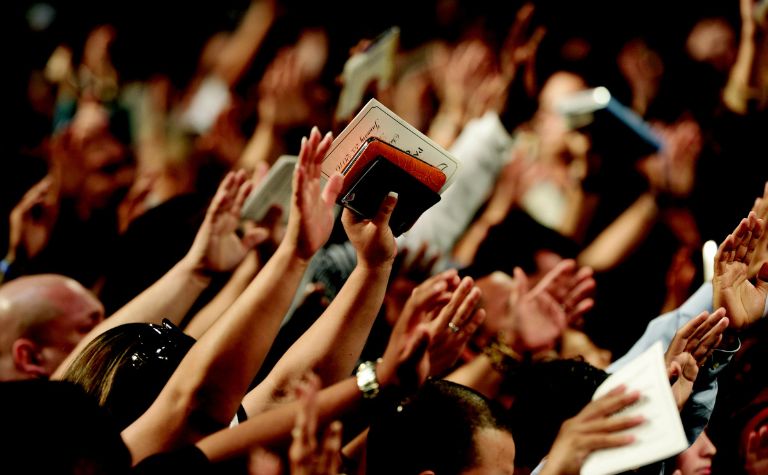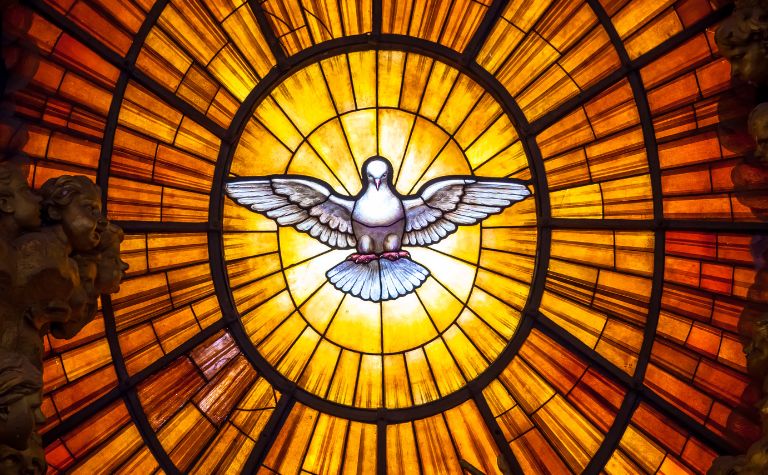The Holy Spirit is the third person of the Trinity, along with the Father and the Son, Jesus Christ. From the time he hovered over the unfashioned waters at the dawn of creation (Gen. 1:2) to when he fell upon the early church at Pentecost (Acts 2:1-4), he has been active in God’s plan for the world. The Spirit is also involved in believers’ lives today, leading many to wonder what he looks like.
The standard mode of the Holy Spirit is unseeable because he is immaterial and invisible. Descriptions of the Spirit’s appearance in the Bible are exceedingly rare. Some scholars don’t believe Scripture ever says what he looks like. Others think that he was visible to the human eye at least once.
What did the Holy Spirit do at Jesus’ baptism? What do Matthew and Luke say about the Spirit’s visible appearance? Did Jesus ever see the Holy Spirit? Did others? What does the Bible say about people who have never seen God? Keep reading to learn the answers to these questions and others.
Also see What Does the Holy Spirit Feel Like? to learn more.

The Holy Spirit at the Baptism of Jesus Christ
John the Baptist baptized Jesus in the Jordan River at the beginning of his public ministry. Jesus wasn’t a sinner; his baptism was “to fulfill all righteousness” (Matt. 3:15, ESV). When Jesus arose from the water, an incredible sight awaited him. He saw the Holy Spirit descend like a dove and heard the Father say from heaven, “This is my beloved Son, with whom I am well pleased” (Matt. 3:17, ESV).
How does Matthew describe the Spirit’s appearance?
Matthew reports that after Jesus arose from the water, “the heavens were opened to him, and he saw the Spirit of God descending like a dove and coming to rest on him” (Matt. 3:16, emphasis added; cf. Mark 1:10). The Greek word translated “saw” is horao. When the word is used in the New Testament, it can refer to physical sight or spiritual awareness or belief.
The visibility of the Spirit validated its descent upon Jesus. One scholar explains the scene this way: “The Holy Spirit made a visual, palpable descent… coming from the expanse beyond the sundered clouds, the Holy Spirit circled downward, fluttering on the bodily wings of a dove and resting upon Jesus, signifying that the Holy Spirit had come upon him and would not depart.” [1]
The Bible teaches that what is spiritual in nature can sometimes become visible to the eye. For example, after Elisha prayed for his servant to see, “the Lord opened the eyes of the young man, and he saw, and behold, the mountain was full of horses and chariots of fire all around Elisha” (2 Kings 6:17, ESV). Additionally, the writer of Hebrews says that some strangers are angels in human form (Heb. 13:2).
How does Luke describe the Spirit’s appearance?
Many scholars believe that Luke 3:22 makes the visible manifestation of the Spirit at the time of Jesus’ baptism even more apparent: “The Holy Spirit descended on [Jesus] in bodily form, like a dove; and a voice came from heaven, ‘You are my beloved Son; with you I am well pleased'” (ESV). Most translations say “bodily form” (NIV, NLT, NASB, NKJV) though the KJV reads, “bodily shape.”
Luke scholar, Darrell Bock, writes, “Luke alone emphasizes the concrete nature of the experience by speaking of a descent in bodily form. The unique reference to σωματικῷ εἴδει (somatiko eidei, in bodily form) shows that the coming of the Spirit was a visible experience.” [3]
Some scholars argue that because the Spirit descended “like” a dove, the narrative is a figure of speech. In this view, there was no visual manifestation of the Spirit or a literal dove because the description is just a metaphor indicating that the Spirit indwelled and empowered Jesus in a special way at the time of his baptism. However, others point out that Matthew says Jesus “saw” the Holy Spirit (Matt. 3:16).
Also see How To Receive the Holy Spirit to learn more.

Was Jesus the only one who saw the Holy Spirit?
Matthew writes that after Jesus was baptized, “the heavens were opened to him” (ESV, emphasis added). This description leads some to believe that he was the only one to see the Holy Spirit and hear the Father. One Matthew scholar speculates about who actually saw the Holy Spirit with their own eyes:
“It appears that Matthew is putting his emphasis on the experience of Jesus. The sight of the opened heavens and the visible manifestation of the Spirit would have been an encouragement to Jesus, and this is the way Matthew records it. Whether other people shared in the experience or not was apparently not so important to him, and he leaves us to puzzle about it.” [3]
To other readers, lead them to believe that spectators at Jesus’ baptism could see the Holy Spirit. They point out that the purpose of the Father’s words calling Jesus his son was to confirm to others who he is. It was evidently important to the Father to proclaim the truth about his son.
Enabling others to see the Holy Spirit descend on Jesus would align with the theme of confirmation in the passage. If others could see the Spirit, they would have had visible and audible verification of Jesus’ identity from the other two members of the Trinity.
Are there other examples of seeing the Spirit in the Bible?
Most scholars believe that the Gospels’ description of the Holy Spirit at the time of Jesus’ baptism is the clearest example of a time when he was visible. Some commentators and theologians argue for the visible manifestation of the Spirit in other passages, but there is considerably less agreement about those possible instances.
For example, some believe that the Holy Spirit visibly manifested at Pentecost because Luke wrote that “divided tongues as of fire appeared to them and rested on each one of them. And they were all filled with the Holy Spirit and began to speak in other tongues as the Spirit gave them utterance” (Acts 2:3-4, emphasis added). Others contend that the description of “fire” is a simile and not literal.
Also see How To Walk In the Spirit to learn more.

What does the Bible say about not seeing God?
Some Christian traditions have unfortunately taught that seeing the Holy Spirit happens when a person is especially holy, devout, or open to God. The Bible doesn’t teach that. In fact, in multiple verses in Scripture, people who have never visibly seen God are called blessed because of the strength of their faith.
- John 20:29 reads, “Jesus said to [Thomas], ‘Have you believed because you have seen me? Blessed are those who have not seen and yet have believed.'”
- 1 Peter 1:8 reads, “Though you have not seen Him, you love Him; and though you do not see Him now, you believe in Him and rejoice with an inexpressible and glorious joy.”
- Hebrews 11:1 reads, “Now faith is the assurance of things hoped for, the conviction of things not seen.”
Also see What Is Christmas Spirit? to learn more.
References:
[1] Luke by R. Kent Hughes. p. 127.
[2] Luke 1:1-9:50 by Darrell Bock. p. 338.
[3] The Gospel According to Matthew by Leon Morris. p. 66.
Related Questions
Feelings are an essential part of being human. Likewise, emotions are a necessary aspect of life. The Bible indicates that Christians experienced different feelings when they engaged with God in a...
One of the most common questions people have about the Holy Spirit is what it means to blaspheme him. People are curious about this because they know it's an unforgivable sin, and some fear they have...
